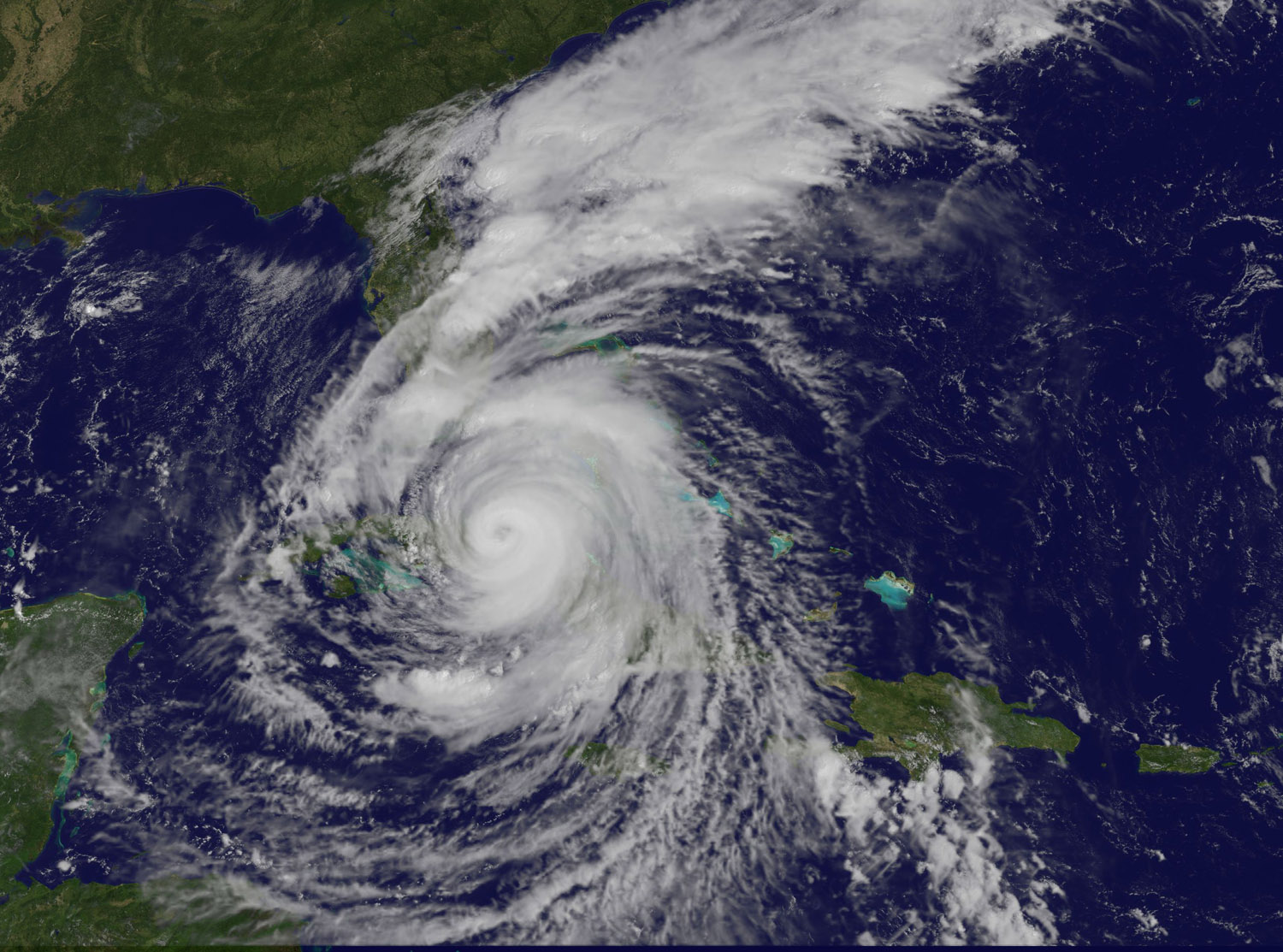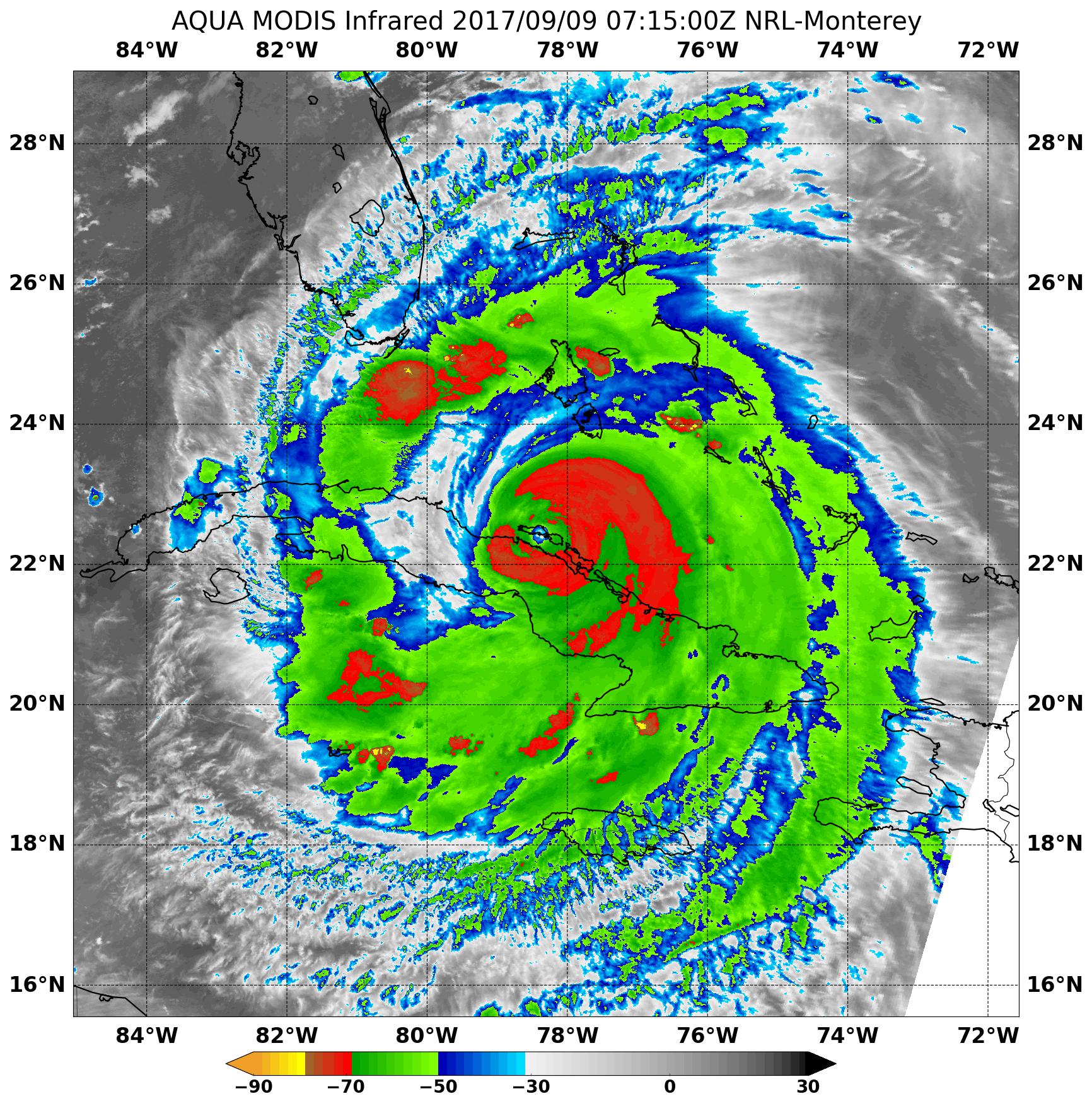Hurricane Irma Hits Cuba, Approaches Florida in NASA Satellite View
New satellite imagery shows Hurricane Irma battering Cuba before making its way toward Florida today (Sept. 9).
The colossal storm made landfall on the northern coast of Cuba Friday evening (Sept. 8) as a Category 5 hurricane, and since then, the eye of the storm has been moving west-northwest along the coast at about 9 mph (15 km/h), the National Hurricane Center (NHC) reported. You can see the latest satellite videos of Hurricane Irma here.
Irma was downgraded to a Category 3 hurricane at about 11 a.m. EDT (1500 GMT) on Saturday. However, officials warn that it is expected to regain strength once it moves back over warm ocean water later tonight. "Irma is forecast to restrengthen once it moves away from Cuba, and Irma is expected to remain a powerful hurricane as it approaches Florida," the NHC said in a public advisory. [Hurricane Irma in Photos: Latest Views from Space]
In a separate statement, NASA officials predicted that "the core of Irma will continue to move near or over the north coast of Cuba later today, and will reach the Florida Keys Sunday morning. The hurricane is expected to move along or near the southwest coast of Florida Sunday afternoon."
NASA's Kennedy Space Center in Cape Canaveral, Florida, along the state's central eastern coast, closed yesterday in preparation for Irma's arrival. In a Twitter statement today, KSC officials said the center is entering a secure HURCON 1 condition as the storm approaches. Nearby, the U.S. military's Cape Canaveral Air Force Station had taken its own steps to safeguard the base and spaceport ahead of the storm.
Weather satellites operated by NASA and the National Oceanic and Atmospheric Administration (NOAA) have been monitoring the storm from space since it formed out in the Atlantic Ocean this week.
A recent view from NASA's Aqua satellite on Saturday morning revealed cold temperatures in the cloud tops of thunderstorms surrounding Hurricane Irma's core, as well as in a band of thunderstorms over the Florida Keys.
Breaking space news, the latest updates on rocket launches, skywatching events and more!
NASA and NOAA satellites are also tracking two more storms in Irma's vicinity: Hurricane Jose and Katia, a former hurricane that was downgraded to a tropical depression after making landfall over Mexico. [Video: Irma, Jose and Katia Seen from Space]
Email Hanneke Weitering at hweitering@space.com or follow her @hannekescience. Follow us @Spacedotcom, Facebook and Google+. Original article on Space.com.

Hanneke Weitering is a multimedia journalist in the Pacific Northwest reporting on the future of aviation at FutureFlight.aero and Aviation International News and was previously the Editor for Spaceflight and Astronomy news here at Space.com. As an editor with over 10 years of experience in science journalism she has previously written for Scholastic Classroom Magazines, MedPage Today and The Joint Institute for Computational Sciences at Oak Ridge National Laboratory. After studying physics at the University of Tennessee in her hometown of Knoxville, she earned her graduate degree in Science, Health and Environmental Reporting (SHERP) from New York University. Hanneke joined the Space.com team in 2016 as a staff writer and producer, covering topics including spaceflight and astronomy. She currently lives in Seattle, home of the Space Needle, with her cat and two snakes. In her spare time, Hanneke enjoys exploring the Rocky Mountains, basking in nature and looking for dark skies to gaze at the cosmos.


